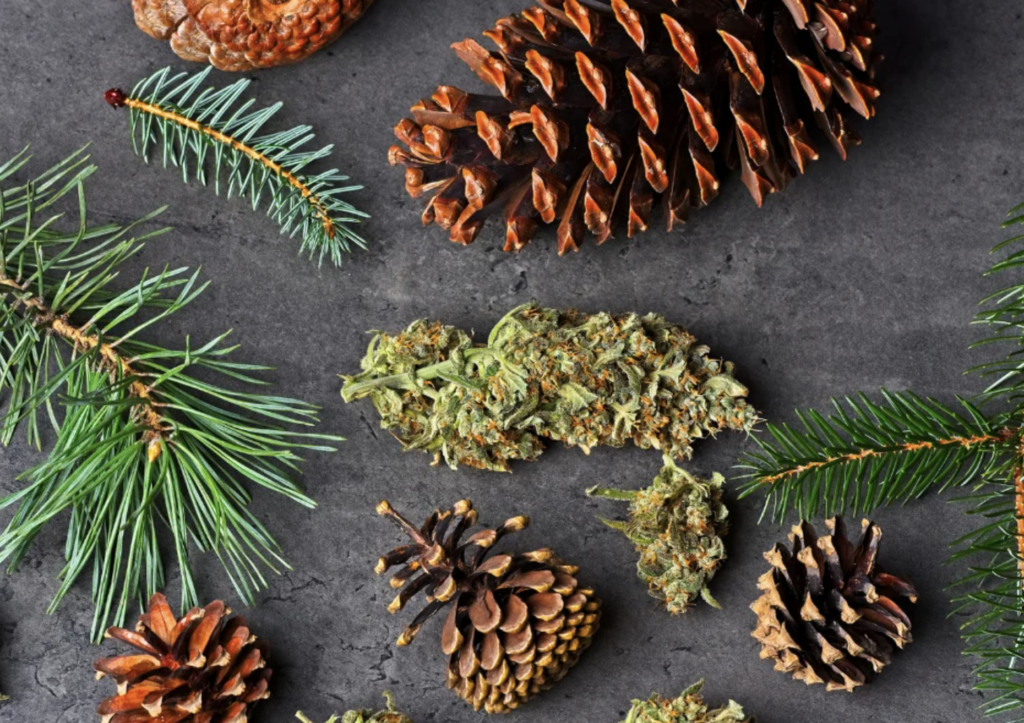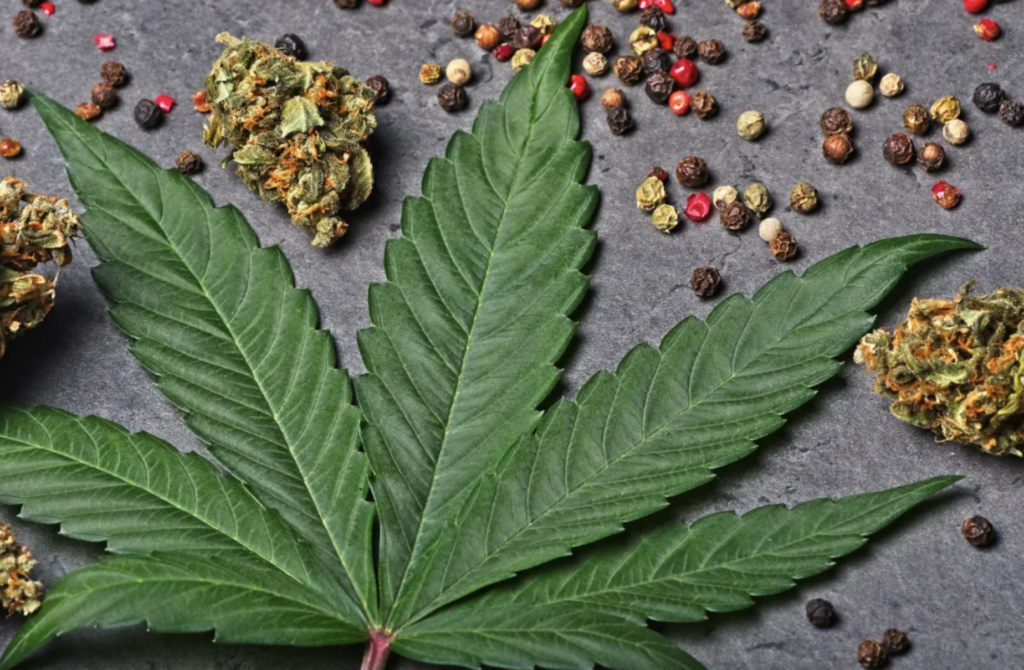
It is reported that there are over 400 terpenes in cannabis. Even though we know cannabis has an abundance of terpenes, experts have only been able to link specific effects to a very small portion of them. One of the biggest things blocking research and development of our understanding of cannabis terpenes is current federal laws.
Even in 2022, the US Federal Government still supports its outdated, draconian viewpoint on cannabis. Marijuana prohibition that effectively began in 1937 with the signing of the MJ Tax Act was built on a foundation of falsehoods, racism, and manipulation of the public at the time, and it continues today. With countless studies supporting the endless medical benefits and therapeutic attributes of cannabis, political puppets still stand there, arguing more research is needed. We can’t argue the fact that more research is needed. But our political representatives need to stop continuing ways of the past supporting marijuana prohibition and start supporting the future by fixing mistakes made long ago.
If the federal government were to remove cannabis from the current schedule 1 status it has, in-depth cannabinoid research could begin cultivating a wealth of knowledge and a deeper understanding of cannabis terpenes. What we do know about cannabis terpenes now, though, is impressive. Cannabis terpenes may play an important role in the intake of cannabinoids by cannabinoid receptors. Deeper research into this could open up endless avenues for new therapeutic advancements with cannabinoid therapies.
Let’s take a quick second to familiarize ourselves with terpenes. Terpenes are found in abundance in various herbs, fruits, and plants. Currently, science estimates there are more than 30,000 of them. Terpenes are what’s behind aroma flavor and sometimes even the color we associate with different fruits, plants, and herbs. Scientific research has shown that terpenes such as linalool and limonene hold medicinal benefits ranging from mood elevating to pain relieving, calming, and more.
A great example of how medical cannabis laws changing could advance our understanding of cannabis-specific terpenes can be seen in the research around curcumin, a common terpene in turmeric. According to research, turmeric “has numerous therapeutic properties that include anti-inflammatory, antioxidant, anticancer, antiseptic, antiplasmodial, astringent, digestive, diuretic, and many more.” Like curcumin, cannabis terpenes could hold a world of uses just waiting to be explored.
Cannabis Terpenes
Cannabis terpenes are different than botanical terpenes. You can taste the difference when concentrate companies use cannabis terpenes in their product compared to when they use botanical terpenes. Cannabis terpenes come with a list of benefits too. Research suggests that the right amount of the right terpene in cannabis can actually help make the cannabis work better.
There are a lot of terpenes in cannabis. It would take forever to look at them all. Instead, we are going to explore some of the most common and some of the least common terpenes in cannabis to see what they are reported to do. According to research, terpenes may play an important role in the number of cannabinoids absorbed by cannabinoid receptors throughout the body.
Let’s look at some of the terpenes in cannabis and see what they can do.

Beta-Caryophyllene is a peppery terpene found in black peppercorns, cloves, cinnamon, and other herbs. This terpene is reported to have anti-inflammatory, anti-spasticity, pain relieving, and mood-boosting properties.
Alpha-Pinene/Beta-Pinene are terpenes that are found in abundance in pine trees and are responsible for their fragrant aroma. They are also found in other plants such as parsley, rosemary, and orange peels. These terpenes have been shown to contain anti-inflammatory benefits and are known to help improve respiratory function.
Alpha-Bisabolol is a terpene with a pleasing floral aroma. It is commonly found in the candeia tree and chamomile flowers. It is highly revered throughout the cosmetic industry and is known to work as an analgesic, antioxidant, antibacterial, and more.
Linalool is a spicy floral terpene commonly found in coriander, mint, cinnamon, and in lavender. It’s reported to have sedative properties that people with conditions such as insomnia, depression, arthritis, and others find beneficial.
Humulene is a woody, earthy, spicy terpene that is commonly associated with hops. It is also found in other plants and herbs such as sage, black pepper, and clove. Research says this terpene works as an anti-inflammatory, a pain reliever, an antibacterial, and more.
Myrcene is said to have an earthy musky aroma with hints of fruit and is often compared to the smell of cloves. It is said to be the most abundant terpene in cannabis. Research suggests myrcene reduces inflammation. Some people also believe that it helps increase the longevity of the effects of cannabis.
Farnesene is a relatively rare terpene found in cannabis. It is said to have sedative effects and mood-calming properties. This terpene is also present in things like patchouli, potatoes, cedar wood, turmeric, grapefruit, and more.
Limonene is believed to be the second most common terpene present in cannabis. This terpene produces a citrus-like flavor and aromatic properties. Research says that limonene helps reduce stress and improve moods. It also has antibacterial, antifungal, and anti-tumor properties as well.
Eucalyptol is a dominant terpene in the eucalyptus tree. It is not a very common terpene in cannabis but is present in small amounts in specific strains like Super Silver Haze. Research says this terpene works as an antifungal and antibacterial and helps to relieve pain.
Terpenes can do a lot of things, as you see. As more research is conducted on cannabis, our understanding of the important role terpenes plays in the benefits that cannabis offers will expand. This knowledge could improve the quality of life for people around the world by helping reduce stress and pain while improving moods. When terpenes such as those listed above work in conjunction with cannabinoids such as THC, CBD, CBN, CBG, CBC, and others it leads to what many refer to as the entourage effect. The entourage effect is believed to be achieved when terpenes, cannabinoids, and other plant compounds and phytonutrients work together to produce the most benefits from cannabis.
Disclaimer: The information, including but not limited to, text, graphics, images and other material contained in this article is for informational purposes only. No material from this article is intended to be a substitute for professional medical advice, diagnosis, or treatment. Always seek the advice of your physician or other qualified health care provider with any questions you may have regarding a medical condition or treatment before undertaking a new health care regimen. Never disregard professional medical advice or delay in seeking it because of something you have read on this website.
